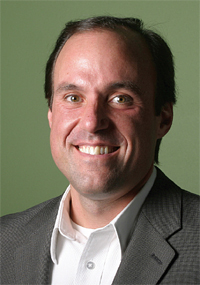Monetizing a Mountain of Media

NY1 selected the Dalet Enterprise Edition all-in-one automation, newsroom and MAM system for managing the entire news production workflow.
SAN FRANCISCO—Just like that, and that one tiny but extremely valuable video clip has gone missing.
True, it's more than a little difficult to keep tabs on the thousands of audio clips and video segments roving around a station's backroom. There are demands to migrate, digitize and thoroughly integrate the production and creative sides together, a reality made all the more difficult by the fact that today the source of content is varied and constantly evolving.
With a standard television program, "at each stage you've got rights holders who have different requirements that need to be met," said Shawn Maynard, president and general manager of Florical Systems. "All along the way, you've got a whole different set of requirements—nothing is common between those groups."
Add to that the difficulty of content piracy. "Because we're becoming a file-based workflow [industry], the opportunity for pirating content is prevalent," he said. It's all the more important that content be managed all the way through the chain, he said.
Media Master, Florical's flagship demand-based asset management system finds and distributes programming to the appropriate outlet. Transcoding allows users to create content for various end uses, a trend that broadcasters must continue to resolve, Maynard said.
"A station's primary revenue stream, perhaps 97 percent, is broadcast, and maybe the Internet or mobile is 1 percent of that," he said. "But stations feel they have to prepare for the future, they've got to consider how viewers will be viewing content: via iPhone, or iPods or a large-screen TV?"

Brian Campanotti, CTO, Front Porch DigitalTRACKING IT ALL
One trend that has begun to solidify: the emergence of a file-based environment. "The market is continuing to move away from reliance on videotape and toward file-based workflows that take into account a single unified infrastructure and the ability to deal with different formats," said Brian Campanotti, chief technology officer at Front Porch Digital in Denver.
Keeping tabs on the thousands of hours of archived videotape languishing in a station's backroom is the goal of the SAMMA file-based archive system, which works with the company's DIVArchive content storage management system.
"Stations still ingest videotape, but [managing] a large-scale migration can be costly," Campanotti said. "But it becomes worth it if you can make money per asset by repurposing content and delving into it for historical content."
Along those same lines, Front Porch has released DIVAPublish, an output mechanism for DIVA that automates the publishing process to iTunes or the Web. "This may help customers justify the migration [of their videotape content] and ease workflows by linking directly to end platforms," Campanotti said.
Other asset management solutions have taken hold by targeting programming types like news and sports, such as Dalet, which recently introduced News Suite and Sports Factory asset management systems. The overarching goal is to store, reference and share media and metadata throughout the chain, whether it be through ingest, logging or in the post production realm, according to Raoul Cospen, director of marketing for Dalet.
The goal of any asset management system is to manage the human aspect and the technology aspect simultaneously, he said. "The system integrates different islands together, such as archive, post production, playout and distribution," he said.
Along with the Dalet Enterprise Edition, the system's IT-based core works to ensure that a single user can tap into all the functionality of the asset management system from one desktop, from logging in content and creating highlights to repurposing content. "The goal is to build a consistent database for the future," he said.

Shawn Maynard, president/GM, Florical SystemsMONITORING USAGE
Prepping for the future also means shoring up the bottom line. Avid's asset management solution Interplay locates assets within the system but also offers a key feature that can lead to a healthier bottom line: the ability to track assets.
By keeping tabs on asset usage throughout the media lifecycle, Interplay can give stations an exact idea of how their content is being used. "If you're creating [content] for a mobile environment, Interplay can track the results, giving you a history of how content is being used," said Jim Frantzreb, senior market segment manager for Media Markets at Avid. "You have a history associated with the media," which can help spur return on investment.
The same idea is a cornerstone within the Harris Invenio digital asset management system. "By digitizing old programming, broadcasters looking to save their archive can do so," said Mark Darlow, product line manager for automation and asset management at Harris. "An investment in that [older] content turns into a format they can use, which turns into a potential revenue generator."
Harris also puts broadcast tools into the hands of citizen journalists with their Newsfish app, which allows iPhone users to capture video and send it to designed servers. That video can then be searched using Invenio. "We need to continue to create technology that doesn't constrain a business to operate in just one way," Darlow said.
The professional video industry's #1 source for news, trends and product and tech information. Sign up below.
Susan Ashworth is the former editor of TV Technology. In addition to her work covering the broadcast television industry, she has served as editor of two housing finance magazines and written about topics as varied as education, radio, chess, music and sports. Outside of her life as a writer, she recently served as president of a local nonprofit organization supporting girls in baseball.

